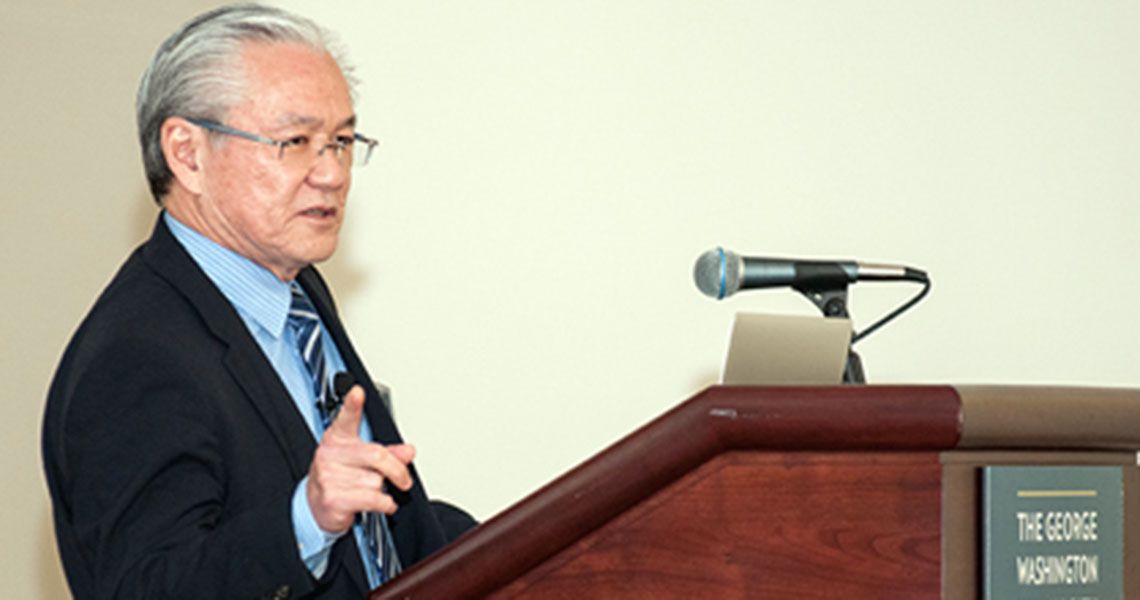“The issue of the neural control of homeostasis really has emerged as a fundamental issue for our understanding of not only the importance of the brain and what it does in the body, but also for really understanding the interface of normal function and disease,” said Anthony S. LaMantia, Ph.D., professor of pharmacology and physiology at GW’s School of Medicine and Health Sciences (SMHS) and director of the GW Institute for Neuroscience (GWIN), as he welcomed the audience of students, faculty, researchers, and guests to the 4th Annual Neuroscience Symposium, May 1.
This year’s symposium, titled “Brain and Body: Neural Control of Homeostasis,” featured 12 speakers who discussed various aspects of the fundamental capacity of all nervous systems, which is to maintain the health and physiological integrity of the organism. LaMantia notes that the neural control of homeostasis unites brain and body for adaptation to an ever-changing environment. “Complications of this essential relationship underlie most serious illnesses and define a key challenge for truly translational neuroscience,” he says.
The day’s events featured two keynote speakers, both pioneers in the elucidation of the brain’s relationship with the body it lives in. The first was Clifford Saper, M.D., Ph.D., James Jackson Putnam Professor at Harvard Medical School and chair of the Department of Neurology at Beth Israel Deaconess Medical Center. Saper discussed hypothalamic regulation of sleep and circadian rhythms, noting that the wake and sleep networks are mutually inhibitory, producing the conditions for a flip-flop switch, which insures rapid and complete transitions in behavioral state.
The second keynote speaker, Joseph Takahashi, Ph.D., from Howard Hughes Medical Institute in the department of neuroscience at the University of Texas Southwestern Medical Center, addressed the molecular architecture to the circadian clock in mammals.
“We’re in a really exciting phase in the field of neuroscience because of all the tools we have at our disposal,” Takahashi noted. “And for us in particular, it’s the tools of genetics and genomics that have really enabled us to attempt to crack open the mechanisms of the circadian clock.”
The annual symposium, which is made possible by the support of the GW Office of the Vice President for Research and the Office of the Dean of SMHS, is hosted by GWIN. The institute’s mission is to facilitate the vital exchange of ideas, and, as such, it supports collaborative neuroscience research and training across the GW campus at Foggy Bottom and at Children’s National Health System, an independent children’s hospital affiliated with SMHS. The institute offers seminars, research colloquia, graduate courses, and core services to enhance the scientific endeavors of GW and Children’s National investigators, fellows, and students.



